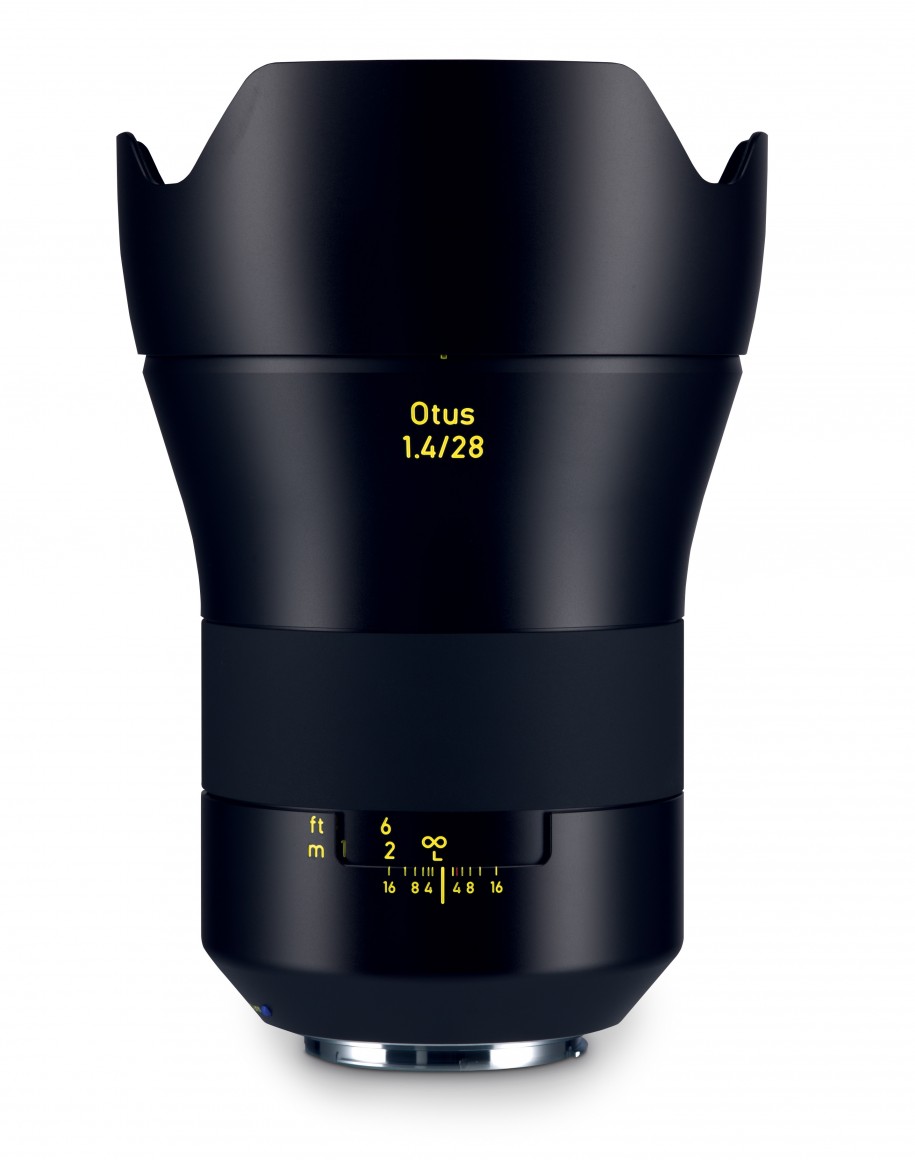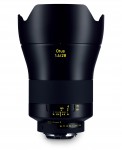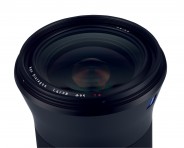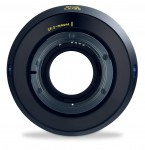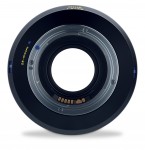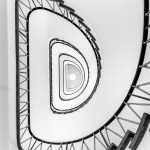ZEISS Otus Apo Distagon T* 28mm F/1.4 ZE / ZF.2
Wide-angle prime lens • Digital era
Abbreviations
| APO | Apochromatic optical design. |
| T* | Multi-layer anti-reflection coating is applied to the surfaces of lens elements. This anti-reflection coating increases light transmission, eliminates flare and ghosting, and maintains color consistence among all lens models. |
| ZE | The lens is designed for Canon EOS 35mm SLR cameras but can be also used on APS-C SLR cameras. |
| ZF.2 | The lens is designed for Nikon 35mm SLR cameras but can be also used on APS-C SLR cameras. The lens features a built-in CPU which is used to transfer metering data from the lens to the camera. |
Specification
| Optical design: | |
| 35mm full frame | |
| 28mm | |
| F/1.4 | |
| 16 elements in 13 groups | |
| 1 Bi-ASPH, 1 ASPH, 8 AD | |
| Floating element system | |
| Canon EF [44mm] | |
| Nikon F [46.5mm] | |
| 75.4° (35mm full frame) | |
| On Canon EOS APS-C [1.59x] cameras: | |
35mm equivalent focal length: | 44.5mm (in terms of field of view) |
35mm equivalent speed: | F/2.2 (in terms of depth of field) |
Diagonal angle of view: | 51.8° |
| On Nikon D APS-C [1.53x] cameras: | |
35mm equivalent focal length: | 42.8mm (in terms of field of view) |
35mm equivalent speed: | F/2.1 (in terms of depth of field) |
Diagonal angle of view: | 53.6° |
| Diaphragm mechanism: | |
Diaphragm type: | Automatic |
Aperture control: | None; the aperture is controlled from the camera (Canon EF) |
| Aperture ring (Manual settings + Auto Exposure setting) (Nikon F) | |
| 9 (nine) | |
| Focusing: | |
| 0.30m | |
| 1:6.25 | |
Focusing modes: | Manual focus only |
Manual focus control: | Focusing ring |
| Physical characteristics: | |
| 1390g (Canon EF) | |
| 1350g (Nikon F) | |
| ⌀108.9×137mm (Canon EF) | |
| ⌀108.9×135mm (Nikon F) | |
| - | |
| - | |
| Accessories: | |
| Screw-type 95mm | |
| 2144-503 - Bayonet-type petal-shaped | |
| Not available |
Sources of data
- Manufacturer's technical data.
- ZEISS lenses for SLR cameras booklet (PUB. EN_10_025_0020II).
Manufacturer description #1
The ZEISS Otus family continues to grow
ZEISS Otus 1.4/28: the new focal length in the wide-angle range augments ZEISS’s most powerful family of SLR lenses
OBERKOCHEN, 2015-10-14.
With the new ZEISS Otus 1.4/28, users of shorter focal lengths can now also take advantage of the uncompromising quality of the ZEISS Otus family, whether for landscapes, architectural photography or any other images they take with a wide-angle lens. Where details count, the ZEISS Otus 1.4/28 with ZE or ZF.2 mount for DSLR cameras from Canon¹ and Nikon¹ is the lens of choice. When used with modern, high-resolution DSLR cameras, it offers unrivalled image quality unseen until now in wide-angle photography, even with a wide-open aperture.
The ZEISS Otus 1.4/28, a moderate wide-angle lens, particularly shows off its strengths in landscape photography. Even with a maximum aperture, the corners of the image are completely usable, so there are no limits to composition. In poor light combined with fast-moving objects, the lens also excels due to its high speed of f/1.4. While other lenses reveal their shortcomings in correction in night photography, especially when lots of open light sources dominate an image, the ZEISS Otus 1.4/28 boasts a stellar performance. Finally, the latest member of the ZEISS Otus family is excellent for taking pictures of image elements in the foreground, as they take on a greater feeling of depth to the scene due to the wide background and the open aperture; here, the lens’s harmonious bokeh ensures a 3D effect.
For professional photographers
Developed to meet the high demands of professional photographers, the ZEISS Otus 1.4/28 has – like the two other focal lengths in the ZEISS Otus family – inner focusing, a dial window and the well-known yellow labeling of the dials for easy legibility, all of which are already known from professional cine lenses (for example ARRI/ZEISS Master Prime).
The ZEISS Otus 1.4/28 also stands out for its mechanical quality: the soft focus operation with the large rotation angle allows for the finest variations when focusing – something that is only possible with a metal construction. In every focusing situation, the user is given freedom to compose – one of the most important creative factors in photography. An artistic tool is literally put in the photographer’s hands. The robust all-metal barrel with its easy-to-grip focus ring is well suited for a photographer’s demanding everyday work; this ensures a long product life. The optical performance of the ZEISS Otus 1.4/28 is outstanding thanks to its high image contrast all the way into the edges of the image – already at an open aperture. Its consistent performance at all distances (minimum working distance of 0.15 m or 5.19”), the highly detailed images it creates without any bothersome artifacts, and the neutral bokeh in the background round out the excellent image quality of the ZEISS Otus 1.4/28. “With these features the ZEISS Otus lenses set themselves apart from the other ZEISS SLR lenses, such as the ZEISS Milvus family, which we recently presented,” said Christophe Casenave, Product Manager with ZEISS Camera Lenses.
Thanks to these characteristics, the ZEISS Otus 1.4/28 offers users who use a modern high-resolution 35-mm DSLR camera a quality that corresponds to the level of the medium format – without having to invest in large and expensive medium-format equipment.
Intricate construction for uncompromising imaging performance
The lens consists of 16 elements in 13 groups. One of the lens elements has an aspheric optical surface and one element is aspheric on both sides. Eight other lens elements are made of special glass. The basis of the optical design is a Distagon. The special glass has anomalous partial dispersion, as is typical for an apochromatic lens. This corrects the longitudinal chromatic aberrations superbly, which therefore lie considerably below the tightly defined boundaries. Bright-dark transitions in the image, in particular highlights, are depicted almost completely free of color artifacts. The floating elements design (the change of distances between certain lens elements when focusing) allows for unrivalled imaging performance along the entire focusing range, from 0.3 m (11.81”) to infinity.
The ZEISS Otus lens family
When ZEISS introduced the ZEISS Otus 1.4/55 in 2013, creating a new family of high-end SLR lenses, the trade press and users alike were enthusiastic. The ZEISS Otus 1.4/55 has exceeded its promises up to this day. The second member of the family, the ZEISS Otus 1.4/85, which was presented at photokina 2014, continued this success story in the short telephoto range. It enables photographers to express their creativity in a unique way – and that with the unsurpassed high imaging performance for which the lenses in the ZEISS Otus family are known. “The ZEISS Otus 1.4/28 continues the tradition of its lens family. It is the best wide-angle that has ever existed. Now we can offer three outstanding lenses for the widest variety of applications,” added Casenave.
Manufacturer description #2
Uncompromising performance across the entire image field makes this full-frame lens unique and sets new standards among wide-angle focal lengths. Raise your photos to a totally new dimension by capturing even the tiniest details of your subject.
Like all focal lengths of the unique ZEISS Otus® family, the Otus 1.4/28 is in a class all of its own. A lens that incorporates the extensive know-how and all the experience of ZEISS.
Use the Otus® 1.4/28 from ZEISS and experience the quality and look of a medium format lens. Whether you are shooting landscape, architecture or interiors, during the day or at night – this lens will provide you with high resolution and outstanding definition regardless of the situation.
The optical correction of the Otus 1.4/28 prevents practically any aberration you can think of. It will just keep on fascinating you – even after many years of use and also on high-resolution systems.
ZEISS Otus series
The Otus lenses from ZEISS deliver uncompromising performance, even at full aperture. They are specially designed for modern digital cameras with high-resolution sensors, and offer on these cameras the standard of quality otherwise only achieved on medium format systems.
- Consistently high resolution and contrast over the entire image frame – even into the corners;
- No chromatic aberration, no distortion;
- Smooth transition between in-focus and out-of-focus areas, and beautiful bokeh thanks to ultra-fast speed of F/1.4;
- Highly precise and robust all-metal mechanical construction;
- Easy-grip focusing ring for the finest of manual focus adjustments;
- Large rotation angle for exact work.
